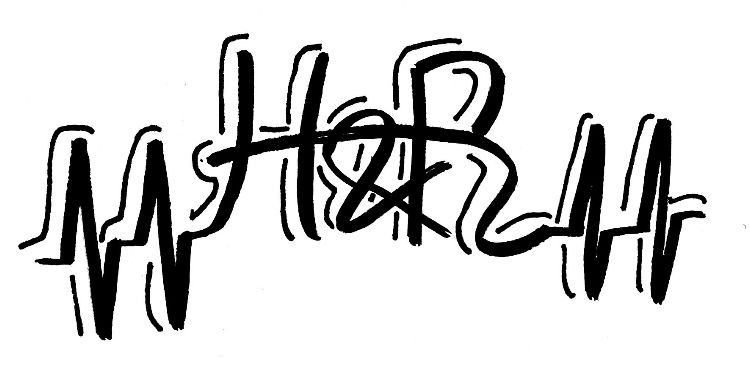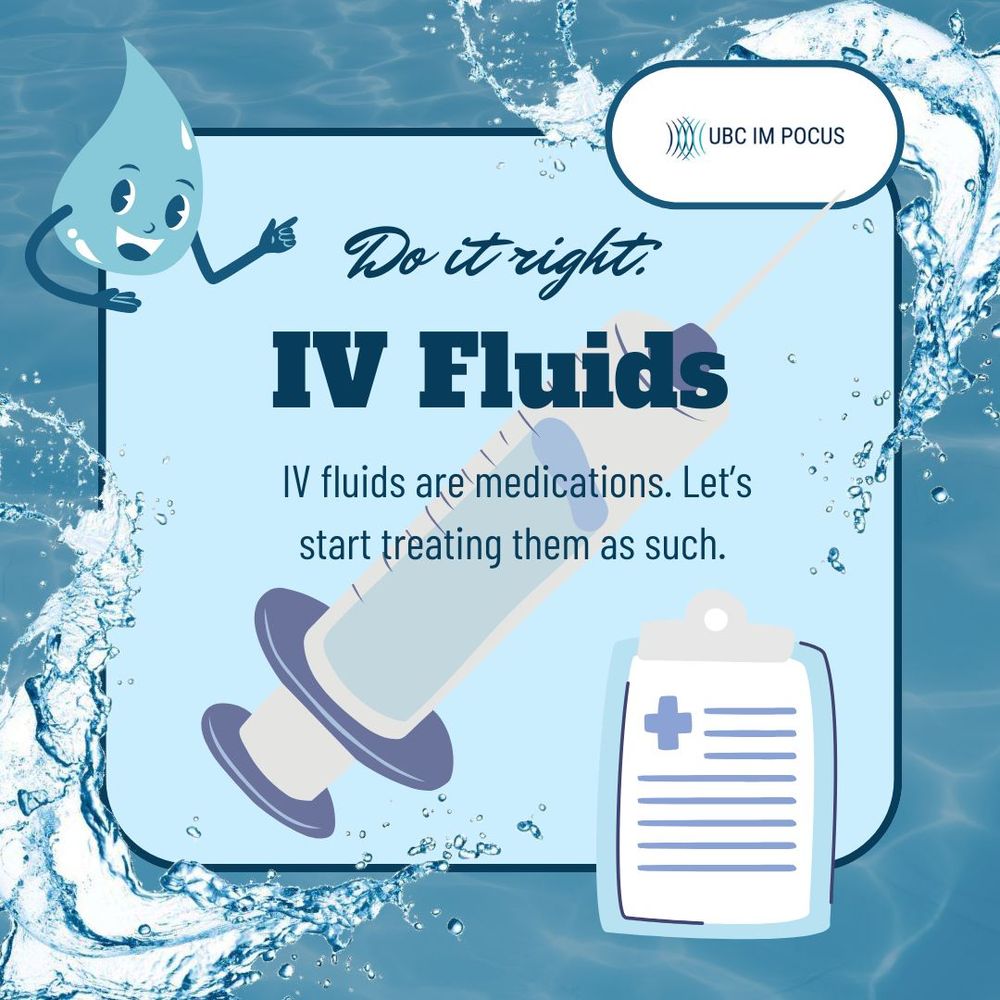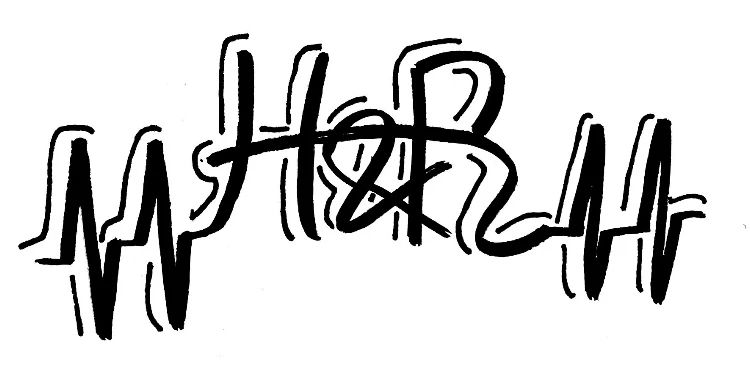

In the meantime - registration for the Hospitalist and the Resuscitationist #HR25 is open!! May 22-23 in Montreal 🇨🇦
There’s no better gathering of hemodynamic and physiology enthusiasts 🩺
thinkingcriticalcare.com/2024/06/05/h...

Some reflections from the day:
(1/n)
Once it's started, the nuances of how to adjust it to optimize each patient's physiology takes skill, experience, and often, a bit of trial and error 🔎
#emimcc
Once it's started, the nuances of how to adjust it to optimize each patient's physiology takes skill, experience, and often, a bit of trial and error 🔎
#emimcc
Ward rounding can seem like an endless task - but it doesn't have to be! ⏰
Here are my top 10 tips for ward rounding efficiency 🧵-
#emimcc

Ward rounding can seem like an endless task - but it doesn't have to be! ⏰
Here are my top 10 tips for ward rounding efficiency 🧵-
#emimcc
Honestly, learn lung US. It is *such* a useful skill in the assessment of the critically ill!
One of the BIGGEST #POCUS misconceptions is that B lines 🟰 pulmonary edema 🤦♀️
Did you know that there is actually a wide DDx for B lines?
Check out my latest video about #LungUltrasound for interstitial syndromes 👀; or read on for the highlights 👇 🧵
#emimcc
www.youtube.com/watch?v=eSuA...

Honestly, learn lung US. It is *such* a useful skill in the assessment of the critically ill!
One of the BIGGEST #POCUS misconceptions is that B lines 🟰 pulmonary edema 🤦♀️
Did you know that there is actually a wide DDx for B lines?
Check out my latest video about #LungUltrasound for interstitial syndromes 👀; or read on for the highlights 👇 🧵
#emimcc
www.youtube.com/watch?v=eSuA...

One of the BIGGEST #POCUS misconceptions is that B lines 🟰 pulmonary edema 🤦♀️
Did you know that there is actually a wide DDx for B lines?
Check out my latest video about #LungUltrasound for interstitial syndromes 👀; or read on for the highlights 👇 🧵
#emimcc
www.youtube.com/watch?v=eSuA...
Prime example? Staph aureus bacteremia 🦠 ☠️
Did you know that involving your ID colleagues early actually ⬇️ mortality?? 🤯
#emimcc
www.sciencedirect.com/science/arti...

Prime example? Staph aureus bacteremia 🦠 ☠️
Did you know that involving your ID colleagues early actually ⬇️ mortality?? 🤯
#emimcc
www.sciencedirect.com/science/arti...



It's my favourite soapbox 🎙️ - so much so, that I've made a 20-min video highlighting the 5 key rules of volume status
Video link ⬇️, but here's the TLDR: 🧵
#emimcc

It's my favourite soapbox 🎙️ - so much so, that I've made a 20-min video highlighting the 5 key rules of volume status
Video link ⬇️, but here's the TLDR: 🧵
#emimcc
#emimcc
#emimcc
(I know, I know. What can I say, I'm a true internist!)
HypoNa is often feared, maligned, and misunderstood - but I promise it doesn't have to be scary!
Here are my top 10 hyponatremia tips and tricks - a 🧵
#emimcc

Wanted to add another concept to your list of great tips!! Something I learned & keep in mind.
bsky.app/profile/alau...

Wanted to add another concept to your list of great tips!! Something I learned & keep in mind.
bsky.app/profile/alau...
my ED mgt:
3%? (ie sz, coma; ie: no)
resist the urge to give fluid (can make Na go up too fast or go down; obscures labs)
order ALL of the labs so the very smart and hardworking upstairs experts ie @katiewiskar.bsky.social can fix it
(I know, I know. What can I say, I'm a true internist!)
HypoNa is often feared, maligned, and misunderstood - but I promise it doesn't have to be scary!
Here are my top 10 hyponatremia tips and tricks - a 🧵
#emimcc

my ED mgt:
3%? (ie sz, coma; ie: no)
resist the urge to give fluid (can make Na go up too fast or go down; obscures labs)
order ALL of the labs so the very smart and hardworking upstairs experts ie @katiewiskar.bsky.social can fix it
(I know, I know. What can I say, I'm a true internist!)
HypoNa is often feared, maligned, and misunderstood - but I promise it doesn't have to be scary!
Here are my top 10 hyponatremia tips and tricks - a 🧵
#emimcc

(I know, I know. What can I say, I'm a true internist!)
HypoNa is often feared, maligned, and misunderstood - but I promise it doesn't have to be scary!
Here are my top 10 hyponatremia tips and tricks - a 🧵
#emimcc
ccusinstitute.wixsite.com/ccus/events/...
@thinkingcc.bsky.social, @katiewiskar.bsky.social

ccusinstitute.wixsite.com/ccus/events/...
@thinkingcc.bsky.social, @katiewiskar.bsky.social
Let's unpack 5 common diuretic prescribing mistakes, and how to correct these 🧵
#emimcc

Let's unpack 5 common diuretic prescribing mistakes, and how to correct these 🧵
#emimcc
"Demystifying Volume Status: An Ultrasound-Guided Physiologic Framework," now published online in @accpchest
Let us know what you think!
#emimcc
journal.chestnet.org/article/S001...
"Demystifying Volume Status: An Ultrasound-Guided Physiologic Framework," now published online in @accpchest
Let us know what you think!
#emimcc
journal.chestnet.org/article/S001...
In the words of @marcogarrone.bsky.social - an EM doc with a self-professed case of #POCUSmania -
"You want to know when to assess for fluid tolerance? The sooner the better! Come check it out at #HR25!"
In the words of @marcogarrone.bsky.social - an EM doc with a self-professed case of #POCUSmania -
"You want to know when to assess for fluid tolerance? The sooner the better! Come check it out at #HR25!"
@thinkingcc.bsky.social @katiewiskar.bsky.social
link below

Far too often I see IV fluids thrown around with minimal consideration; meanwhile, we'll deliberate for hours about a dose of lasix 🤦♀️
Here are the 10 most common fluid prescription mistakes I see 🧵
#emimcc

Far too often I see IV fluids thrown around with minimal consideration; meanwhile, we'll deliberate for hours about a dose of lasix 🤦♀️
Here are the 10 most common fluid prescription mistakes I see 🧵
#emimcc
I’m looking forward to joining in and talking about ventilation, ECMO, and POCUS.
It would be great to see as many of you there as possible.
Register here: ccusinstitute.wixsite.com/ccus/events/hr…
@katiewiskar.bsky.social @thinkingcc.bsky.social

I’m looking forward to joining in and talking about ventilation, ECMO, and POCUS.
It would be great to see as many of you there as possible.
Register here: ccusinstitute.wixsite.com/ccus/events/hr…
@katiewiskar.bsky.social @thinkingcc.bsky.social
In the very wise words of Dr. Frederik Verbrugge - "Elevated cardiac filling pressures and fluid overload are both important, yet grossly different features of acute decompensated heart failure."
#emimcc
In the very wise words of Dr. Frederik Verbrugge - "Elevated cardiac filling pressures and fluid overload are both important, yet grossly different features of acute decompensated heart failure."
#emimcc



